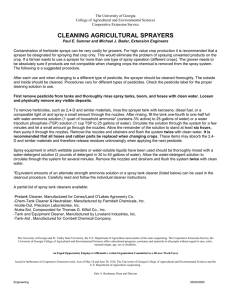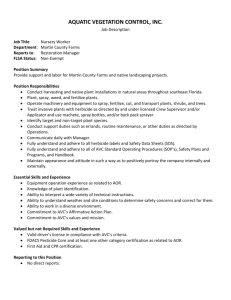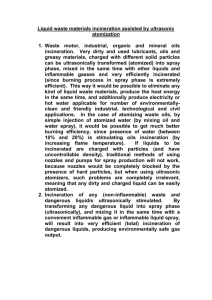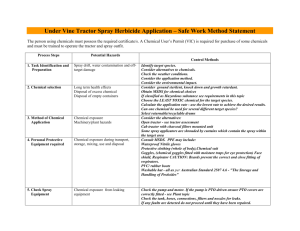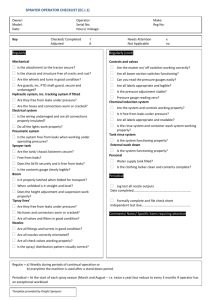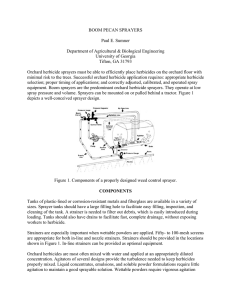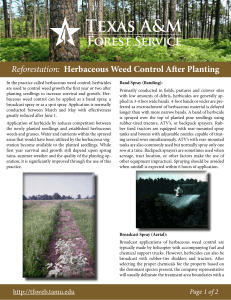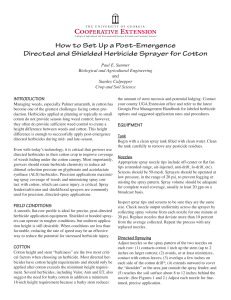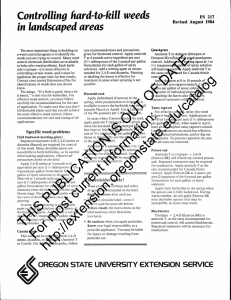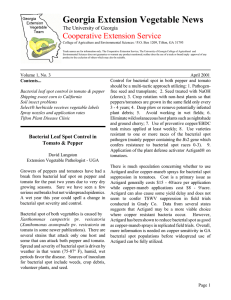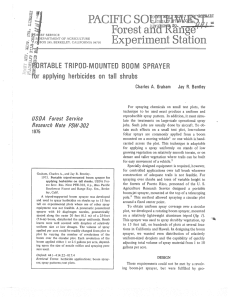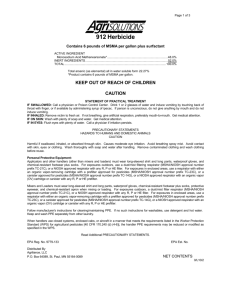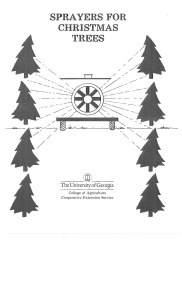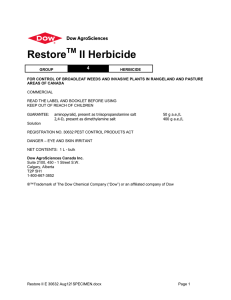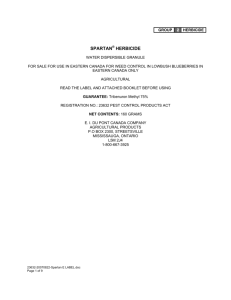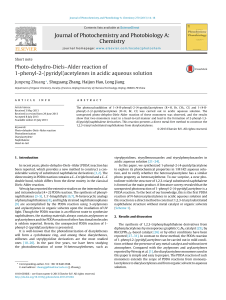Breakout on Army Herbicide Field Manual
advertisement
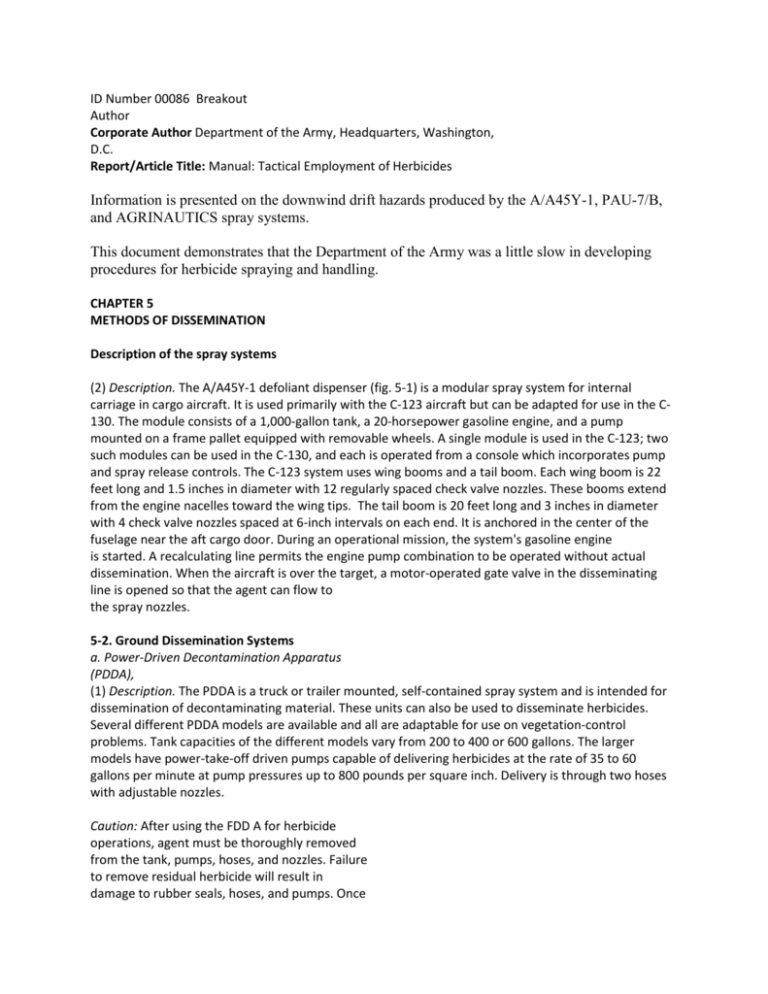
ID Number 00086 Breakout Author Corporate Author Department of the Army, Headquarters, Washington, D.C. Report/Article Title: Manual: Tactical Employment of Herbicides Information is presented on the downwind drift hazards produced by the A/A45Y-1, PAU-7/B, and AGRINAUTICS spray systems. This document demonstrates that the Department of the Army was a little slow in developing procedures for herbicide spraying and handling. CHAPTER 5 METHODS OF DISSEMINATION Description of the spray systems (2) Description. The A/A45Y-1 defoliant dispenser (fig. 5-1) is a modular spray system for internal carriage in cargo aircraft. It is used primarily with the C-123 aircraft but can be adapted for use in the C130. The module consists of a 1,000-gallon tank, a 20-horsepower gasoline engine, and a pump mounted on a frame pallet equipped with removable wheels. A single module is used in the C-123; two such modules can be used in the C-130, and each is operated from a console which incorporates pump and spray release controls. The C-123 system uses wing booms and a tail boom. Each wing boom is 22 feet long and 1.5 inches in diameter with 12 regularly spaced check valve nozzles. These booms extend from the engine nacelles toward the wing tips. The tail boom is 20 feet long and 3 inches in diameter with 4 check valve nozzles spaced at 6-inch intervals on each end. It is anchored in the center of the fuselage near the aft cargo door. During an operational mission, the system's gasoline engine is started. A recalculating line permits the engine pump combination to be operated without actual dissemination. When the aircraft is over the target, a motor-operated gate valve in the disseminating line is opened so that the agent can flow to the spray nozzles. 5-2. Ground Dissemination Systems a. Power-Driven Decontamination Apparatus (PDDA), (1) Description. The PDDA is a truck or trailer mounted, self-contained spray system and is intended for dissemination of decontaminating material. These units can also be used to disseminate herbicides. Several different PDDA models are available and all are adaptable for use on vegetation-control problems. Tank capacities of the different models vary from 200 to 400 or 600 gallons. The larger models have power-take-off driven pumps capable of delivering herbicides at the rate of 35 to 60 gallons per minute at pump pressures up to 800 pounds per square inch. Delivery is through two hoses with adjustable nozzles. Caution: After using the FDD A for herbicide operations, agent must be thoroughly removed from the tank, pumps, hoses, and nozzles. Failure to remove residual herbicide will result in damage to rubber seals, hoses, and pumps. Once the PDDA has been used for herbicide operations, it is no longer safe for carrying water for drinking or showering. The PDDA should be tagged with a warning note and a warning note entered in the decon's logbook. (6) Loading and storage areas where ORANGE has been spilled repeatedly may be decontaminated by flushing them several times with diesel fuel. The used diesel fuel should be drained into settling basins or pits so that it will be incorporated into the soil and decomposed by the action of soil microorganisms and sunlight. (c) Containers should be removed from loading areas frequently to avoid damage or hazard to nearby sensitive crops by concentrated vapors of the chemicals or by improper use of the empty containers in agricultural areas. Used containers and surplus quantities of ORANGE should be buried in deep pits at locations where there will be the least possibility of agent leaching into water supplies or cultivated crop areas. Note: Wash down instruction includes light fuel oil and/or water. Oil and water will not degrade Agent Orange, and is sometimes added to spray mixture to make herbicide adhere to surfaces.

